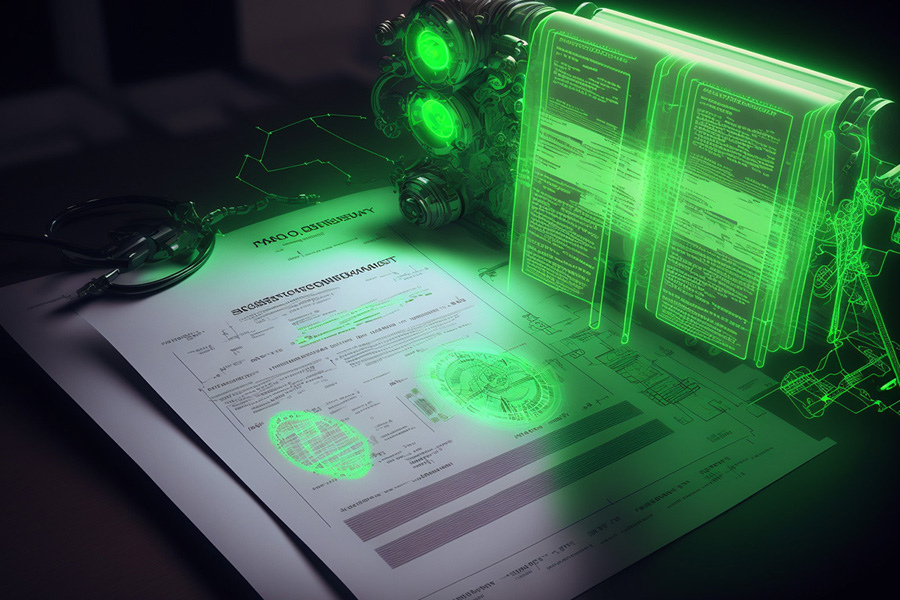Yes, this is the question of the century. While Shakespeare himself never would have had to make the choice between AI and original content, due to the convenience factor, even he would think twice before saying no to AI.
Thanks to generative AI, we have made great strides in the area of content. Like with most things, although the purpose of any tool like generative AI is for the advancement of humankind and the intent is to create bandwidth for more value-oriented decisions, the over-use of AI is now rampant. With barely any background check of the information released. Content creation is merely a matter of adding a check to the to-do list rather than a pursuit of uniqueness and ingenuity.
Thankfully it didn’t take long for AI detectors to enter the market. But is it the boon to the bane? Or is it adding to the problem? This blog attempts to answer one basic foundational question- Should you invest your time, effort, or money on an AI detector?
At face value, it seems like a direct answer based on which field you are working in. If you are extensively working with Academia, Journalism, PR, marketing, or any other field that is heavily dependent on the uniqueness of content, it makes sense to rely on an AI detector.
But is it truly that simple? Well, there are a few more perspectives to look at before making an informed decision. The main reason is that AI detectors are not 100 percent accurate. How come? Well, the main reason is that language is used to convey ideas by different people in different ways. This makes it difficult for the detectors to categorize it correctly. The other reason is that AI models are constantly learning and mimicking human-generated content.
So, AI detectors have to be responsive and quick to ensure that the machine learning algorithms are up to date with the datasets that help distinguish human and AI-generated content.
This also leads to the next point of consideration: an AI detector is only as good as the datasets it is trained on. This means that the AI detectors need to be constantly trained to stay at pace with the changing requirements of the market. Another issue is overfitting and underfitting. Overfitting is the issue where the AI model is so attuned to the existing guidelines that it cannot consider new data and underfitting is the inability of AI to interpret and distinguish the nuances of AI and Human content.
Moreover, AI detectors analyze the content based on word choice, sentence structure, and coherence. AI still lacks the prowess to understand and analyze the hallmarks of human content which are creativity, originality, and deeper meaning.
So as of now, AI is capable of drawing a rough line that separates AI content from human content. So does this make a horrible choice? Does it make it better if humans manually check the content? While it seems to be a better option, there are a few aspects to consider here as well. To start with, it is a very labor-intensive process. While AI can work tirelessly across multiple documents or bodies of content in a matter of seconds, humans take more time and are easily tired out.
Humans might also be extremely biased based on the person who is in charge of gatekeeping the content. (Not to mention, human decisions are also based on mood, proficiency to identify content, and so on) . In connection with the previous point, it is also extremely difficult for humans to deal with large volumes of content. The scalability aspects bring in additional complications like cost, and training the personnel frequently based on the newer models. To make sure the personnel is up to date with the latest workings of generative AI models, an L and D department news to be set up to help create material for the core team to progress. This adds to the expense.
While there are advantages and disadvantages to purely aligning to one side of the argument, you can reap the rewards of both by creating a hybridized approach. To elaborate, you can use up to three AI detectors as the first level of screening. If they all show high AI-generated content, you can flag the piece. If it passes this level, you can use a team that is well-trained in detecting AI content for the final check. The costs here are substantially reduced. You may have the concern that using three AI detectors would be expensive. But that’s where HireQuotient’s free AI detector can help you out. The tool is constantly checked for accuracy, there is no sign-up required and it’s free forever. There are other tools that you can test out but this is more than enough to get you started. The ball is now in your court, test the tools and see how well it works for your existing workflow.

